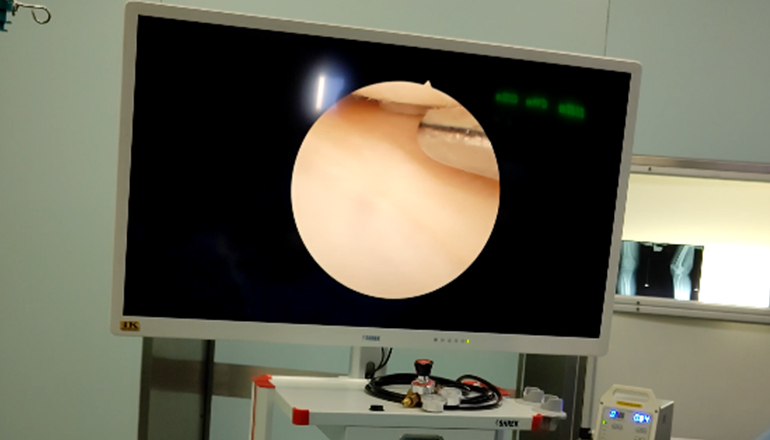- Shanghai, China
- [email protected]
- +86-21-58189111
A popliteal cyst, also known as a Baker's cyst, is a fluid-filled sac that develops in the back of the knee joint. It can cause pain, swelling, and stiffness in the knee and can be caused by underlying conditions such as arthritis or a meniscus tear. Arthroscopic minimally invasive treatment is one option for managing this condition.
Arthroscopic minimally invasive treatment of a popliteal cyst involves inserting a small camera, called an arthroscope, into the knee joint through a small incision. The arthroscope allows the surgeon to visualize the inside of the joint and identify the underlying cause of the cyst. Once the underlying cause has been identified, the surgeon can use small instruments to remove any loose or damaged tissue that is contributing to the cyst.
During the procedure, the surgeon may also perform a synovectomy, which involves removing the lining of the joint that is producing the excess fluid. This can help to prevent the cyst from reoccurring.
Arthroscopic minimally invasive treatment of a popliteal cyst is typically performed on an outpatient basis and is done under local or general anesthesia. Recovery time is generally faster than with traditional open surgery, with most patients able to return to normal activities within a few days to a week.

Benefits of arthroscopic minimally invasive treatment of a popliteal cyst include smaller incisions, less post-operative pain, and a faster recovery time compared to traditional open surgery. Additionally, because the procedure is performed using a small camera, there is less risk of damage to surrounding tissues or nerves.
However, like any medical procedure, there are risks associated with arthroscopic minimally invasive treatment of a popliteal cyst. These risks include bleeding, infection, damage to surrounding tissues, and the potential for the cyst to reoccur. Patients should discuss the risks and benefits of the procedure with their doctor and make an informed decision about whether it is right for them.
In conclusion, arthroscopic minimally invasive treatment of a popliteal cyst is a safe and effective option for managing this condition. It involves inserting a small camera into the knee joint through a small incision and using small instruments to remove any damaged tissue contributing to the cyst. Recovery time is generally faster than with traditional open surgery, and there is less risk of damage to surrounding tissues or nerves. Patients should discuss the risks and benefits of the procedure with their doctor and make an informed decision about whether it is the right option for them.
Following the procedure, patients may experience some discomfort, swelling, and stiffness in the knee joint, but this is generally temporary and can be managed with pain medication and ice packs. Patients may also be advised to use crutches or a knee brace for a short period of time to help support the joint as it heals.
It is important for patients to follow all post-operative instructions provided by their surgeon, including keeping the knee elevated and avoiding strenuous activities for a period of time after the procedure. Patients should also attend all follow-up appointments to ensure that the knee is healing properly and to address any concerns or complications that may arise.
In conclusion, arthroscopic minimally invasive treatment of a popliteal cyst is a safe and effective option for managing this condition. It offers numerous benefits over traditional open surgery, including smaller incisions, less post-operative pain, and a faster recovery time. Patients who are experiencing symptoms related to a popliteal cyst should speak with their doctor to discuss their treatment options and to determine whether arthroscopic minimally invasive treatment is right for them. With proper care and management, most patients are able to return to their normal activities and experience significant relief from their symptoms.
Leave a Comments